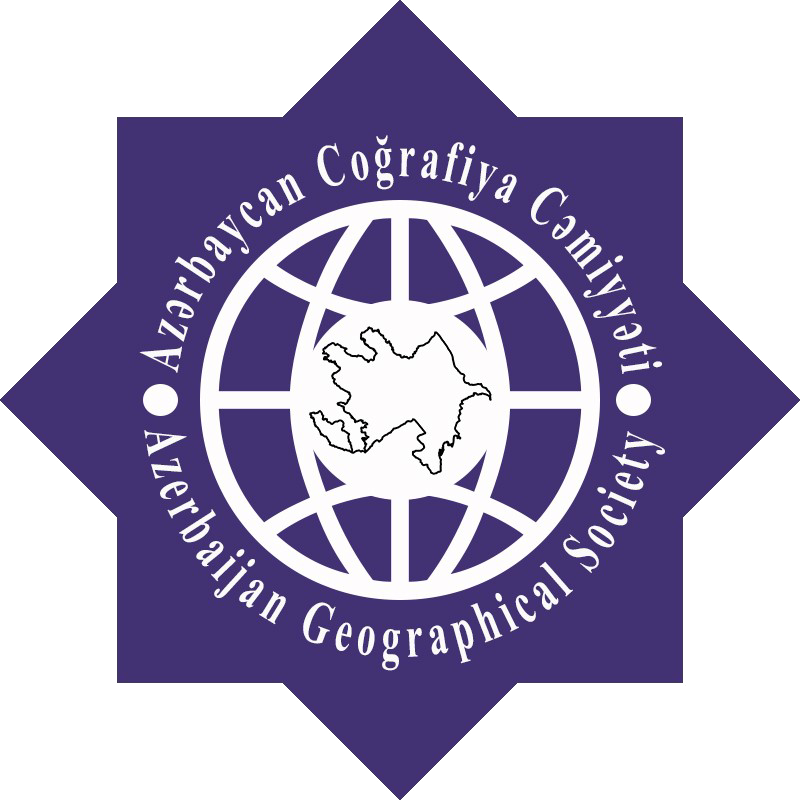ГЛИНИСТЫЕ МИНЕРАЛЫ ПРОДУКТИВНОЙ СЕРИИ (СУРАХАНСКАЯ СВИТА) И ИХ ВЗАИМОСВЯЗЬ С ПАЛЕОКЛИМАТОМ
Е.Н.Тагиева, З.Н.Джавадзаде, Э.А.Абдуллаев
Институт Географии им. академика Г.А.Алиева НАН Азербайджана
AZ1143, Азербайджан. г. Баку, ул. Г Джавида, 115
Аннотация. Глинистые минералы являются одним из важных индикаторов определения палеоклимата. Только аллотигенные глинистые минералы без каких либо диагенетических изменений могут быть использованы для определения степени выветривания, которая напрямую связана с климатическими условиями. Исследование глинистых минералов отложений сураханской свиты (верхний отдел Продуктивной толщи) Абшеронского полуострова показало высокое содержание в них иллита. Это указывает на аридные климатические условия в зоне их формирования, то есть – на Русской платформе, откуда они были затем привнесены. Однако, в интервале 1-2,1 м изученного разреза, отмечается повышенное содержание смектита, который свидетельствует о мягком и гумидном климате на Русской платформе в этот отрезок времени.
ЛИТЕРАТУРА
- Ağayev, A.A., Çökmə proceslərin geokimyası. Adil oğlu, Baku. 136 s.
- Алиева Э.Г., Алиев Ч.C., Гусейнов Д.А., Бабаев Ш.А., Мамедов Р. M. 2008. Условия седиментации отложений нижнего отдела продуктивной толщи и их естественная радиоактивность. Стратиграфия и седиментология нефтегазоносных бассейнов, № 2, с. 91-110.
- Abdullayev, E and Leroy, S. A.G. 2016. Leroy Provenance of clay minerals in the sediments from the Pliocene Productive Series, western South Caspian Basin. Marine and Petroleum Geology 73, 2016, p. 517-527.
- Biscaye, P.E., Distinction between kaolinite and chlorite in recent sediments by X-ray diffraction. American Mineralogist 49, 1964, 1281–1289.
- Biscaye, P.E., 1965. Mineralogy and sedimentation of recent deep sea clay in the Atlantic Ocean and adjacent seas and oceans. Geological Society of America, Bulletin, 76, 803–832.
- Chamley, H., 1989. Clay sedimentology. Springer-Verlag, Berlin, Heidelberg, New York, 623 p.
- Esquevin, J., 1969. Influence of chemical composition of the clay on the crystallinity. Bulletin des Centres de Recherches de Pau-Societe Nationale des Petroles d’ Aquitaine 3, p. 147-154.
- Fagel, N., 2007 Clay minerals, deep circulation and climate. Development in Marine Geology 1, p. 139-176.
- Forte, A.M., Cowgill, E., 2013. Late Cenozoic baselevel variations of the Caspian Sea: A review of its history and proposed driving mechanisms. Palaeogeography, Palaeoclimatology, Palaeoecology 386, p. 392-407.
- Franke, D., Ehrmann, W., 2010. Neogene clay mineral assemblages in the AND-2A drill core (Mc Murdo Sound, Antarctica) and their implications for environmental change. Palaeogeography, Palaeoclimatology, Palaeoecology 286, p. 55-65.
- Gradusov, B.P., 1974. A tentative study of clay mineral distribution in soils of the world. Geoderma 12, p. 49-55.
- Hinds, D.J., Aliyeva, E., Allen, M.B., Davies, C.E., Kroonenberg, S.B., Simmons, M.D., Vincent, S.J., 2004. Sedimentation in a discharge dominated fluvial-lacustrine system: the Neogene Productive Series of the South Caspian Basin, Azerbaijan. Marine and Petroleum Geology 21, p. 613–638.
- Meyers, P.A., Lallier-Verges, E., 1999. Lacustrine sedimentary organic matter records of Late Quaternary paleoclimates. Journal of Paleolimnology 21, p. 345–372.
- Pettijohn, F.J., Potter, P.E., Siever, R., 1987. Sand and sandstone. Springer, Berlin. 552 p.
- Singer, A., 1984. The paleoclimatic interpretation of clay minerals in sediment a review. Earth-Science Reviews 21, p. 251-293.
- Singer, A., 1980. The paleoclimatic interpretation of clay minerals in soils and weathering profiles. Earth-Science Reviews 15, p. 303-326.
- Thiry, M., 2000. Palaeoclimatic interpretation of clay minerals in marine deposits: an outlook from the continental origin. Earth-Science Reviews. 49, p. 201-221.
- Tyson, R.V., Sedimentary organic matter. Chapman and Hall, Oxford, 1995, 615 p.
- Vincent, S.J., Davies, C.E., Richards, K., Aliyeva, E., 2010. Contrasting Pliocene fluvial depositional systems within the rapidly subsiding South Caspian Basin; a case study of the Palaeo-Volga and Palaeo-Kura river systems in the Surakhany Suite, Upper Productive Series, onshore Azerbaijan. Marine and Petroleum Geology 27, p. 2079-2106.
- Wang, X., Zhang, Y., Chen, R., 2010. Distribution and partitioning of polycyclic aromatic hydrocarbons (PAHs) in different size fractions in sediment from Boston Harbor, United States. Marine Pollution Bulletin 42, p. 1113-1149.
- Weaver, C.E., 1989. Clays, Muds, and Shales. Elsevier, Amsterdam, 818 p.
